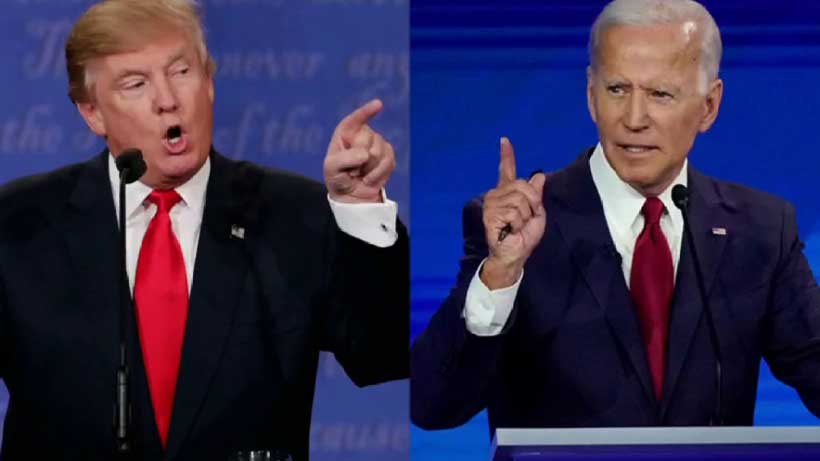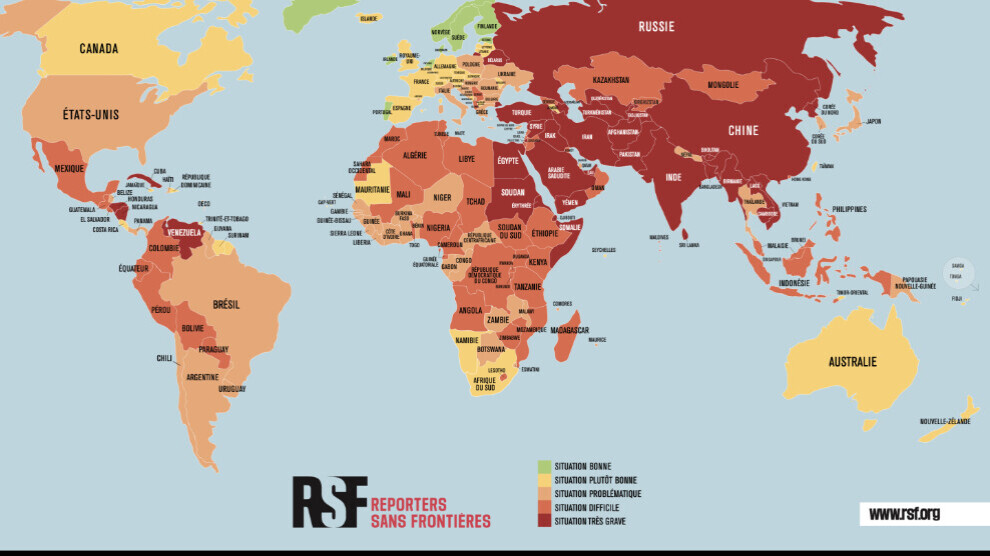The Attainability of the Evidentiary Standard for Genocidal Intent in Gaza
Written by Rana Moustafa Essawy May 3, 2024
Since 2019, the International Court of Justice (ICJ) has been perceived as a viable instrument for stopping ongoing genocides after the UN political organs have failed to take effective actions to that effect. Thus, under Article IX of the Genocide Convention (1948), South Africa took Israel to the ICJ for its genocide against the Palestinians in Gaza after Israel’s defiance of the resolutions issued by the Security Council and General Assembly.
On 26 January, the ICJ issued an order on provisional measures against Israel. Many expected this order and even described it as a foregone conclusion. By contrast, an affirmative finding from the Court regarding the commission of genocide in Gaza has been described by many as certainly unlikely. The main reason put forward by proponents of that opinion is the very high threshold that the ICJ requires for proving ‘genocidal intent’, as it requires proof that the intent is ‘the only reasonable inference’ drawn from the evidence.
Despite the recent report of the UN Special Rapporteur on the situation of human rights in the occupied Palestinian territories, Francesca Albanese, demonstrating and concluding that the genocidal intent is the ‘only reasonable inference’ to be drawn regarding the objective of the Israeli Defense Forces’s (IDF) acts (see here as well), it is argued that the declared military objective to destroy Hamas after the attack on 7 October cannot be overlooked as another reasonable inference, making the ICJ’s standard for genocidal intent unattainable.
Even if one arguably assumes that the destruction of Hamas can reasonably be inferred as the objective of the IDF’s acts, this does not negate a finding of genocidal intent under the ICJ’s standard of ‘only reasonable inference’. Thus, it is the purpose of this blog post to discuss the ICJ’s threshold and demonstrate that it is not a legal impediment to making an affirmative finding on the commission of genocide in Gaza.
The ICJ’s Approach to Genocidal Intent
Genocide is defined in Article II of the Genocide Convention as any of the following acts committed with the intent to destroy, in whole or in part, a national, ethnical, racial, or religious group: (a) killing members of the group; (b) causing serious bodily or mental harm to members of the group; (c) deliberately inflicting on the group conditions of life calculated to bring about its physical destruction in whole or in part; (d) imposing measures intended to prevent births within the group; and (e) forcibly transferring children of the group to another group.
Accordingly, genocide can be claimed to have been committed only if it can be proven that the perpetrator held a genocidal intent. Thus, this genocidal intent—usually referred to as ‘the specific intent’ or ‘dolus specialis’—distinguishes genocide from other serious crimes because the perpetrator should have not only the normal mens rea of intending to commit one of the acts listed above but also the intent to destroy the group, in whole or in part.
The ICJ has dealt with genocidal allegations in two contentious cases: The Application of the Convention on the Prevention and Punishment of the Crime of Genocide in 2007 (Bosnia v. Serbia) and 2015 (Croatia v. Serbia). In both cases, the ICJ refused to make the positive finding that Serbia had ‘committed genocide, through its organs or persons whose acts engage its responsibility’ but concluded in the affirmative that Serbia had ‘violated the obligation to prevent genocide’ only in respect of the events that transpired in Srebrenica in July 1995 (Bosnia v. Serbia).
Although the Court accepted in both cases that genocidal intent could be established on the basis of circumstantial evidence as this intent is rarely declared or formulated explicitly, it did not find that a dolus specialis can be inferred from the pattern of atrocities presented by the applicants as evidence of such intent. In that respect, the Court required that the pattern of acts should ‘have to be such that it could only point to the existence of such intent’ (emphasis added) (Bosnia v. Serbia, para. 373). Using the terms of the decision for the case of Croatia v. Serbia, the Court stressed that ‘in order to infer the existence of dolus specialis from a pattern of conduct, it is necessary and sufficient that this is the only inference that could reasonably be drawn from the acts in question’ (emphasis added) (para. 148).
This threshold required for proving genocidal intent has been criticised since then (e.g. see here). Recently, in their joint intervention declaration in the case of Myanmar, Canada, the Netherlands, the United Kingdom, Germany, France, and Denmark warned against ‘rendering the threshold for inferring genocidal intent so difficult to meet so as to make findings of genocide near-impossible’ (para. 51).
Furthermore, in his dissenting opinion to the ICJ’s decision in the case of Croatia v. Serbia, Judge Cançado Trindade argued that the Court ‘seems to have imposed too high a threshold for the determination of mens rea of genocide, which does not appear in line with the jurisprudence constante of international criminal tribunals on the matter’ (para.467).
However, by reviewing the case law database for the international criminal tribunals (International Criminal Tribunal for the former Yugoslavia [ICTY]/International Criminal Tribunal for Rwanda [ICTR]), it appears that the standard of ‘the only inference that could reasonably be drawn’ is the established standard of proof by inference. It has also been applied by tribunals in the context of genocidal intent (see Krstić ICTY Appeal Judgment para. 41; Nyiramasuhuko et al. ICTR Trial judgment, para. 5732; Karadžić ICTY Trial Judgment, para. 2592)
The ‘only reasonable inference’ standard is commonly perceived as similar to the ‘beyond reasonable doubt’ standard of proof applied in the realm of international criminal jurisprudence. Consequently, it is understood as a standard of proof whereby the ICJ is required to discard any inference of genocidal intent if any other motive could reasonably be inferred from evidence.
Nevertheless, I believe that such an understanding would be oversimplistic in the context of the crime of genocide, given that the international criminal tribunals have envisaged the possibility of the co-existence of genocidal intent with other motives. For example, the ICTY Appeals Chamber decided in the Jelisić case that ‘the existence of a personal motive does not preclude the perpetrator from also having the specific intent to commit genocide’ (para. 49). Furthermore, in the Niyitegeka case, the ICTR Appeals Chamber rejected the argument that the word ‘as such’ in the definition of genocide should be interpreted to require a determination that the perpetrator’s acts were ‘solely’ motivated by the intent to destroy (paras.47-55).
In that respect, the ICTY and ICTR have referred to the motive ‘to obtain personal economic benefits, or political advantage or some form of power’ as examples of motives that can co-exist with genocidal intent. Furthermore, military considerations have been considered among the motives that can co-exist with genocidal intent. On that latter point, Judge Trindade warned (citing Ryan Y. Park) in his dissenting opinion to the ICJ’s decision in Croatia v. Serbia:
One cannot characterize a situation as one of armed conflict so as to discard genocide. The two do not exclude each other. In this connection, it has been pertinently warned that perpetrators of genocide will almost always allege that they were in an armed conflict, and their actions were taken “pursuant to an ongoing military conflict”; yet, “genocide may be a means for achieving military objectives just as readily as military conflict may be a means for instigating a genocidal plan” (para.144).
However, if genocidal intent can co-exist with those other motives, it would be nearly impossible to prove because in most cases, it will not be ‘the only reasonable inference’ that could be made on the basis of evidence. Therefore, I believe that understanding the nature of genocidal intent is essential to understanding how the ICJ’s approach of ‘the only reasonable inference’ should be interpreted and applied. It is to this point the following section turns to.
The Nature of ‘Genocidal Intent’
This section will explore the nature of genocidal intent and its relation to other motives. In this respect, it builds partly on Paul Behren’s article ‘Genocide and the Question of Motives’.
Although genocidal intent is established to be the distinguishing feature of genocide, the nature of this ‘dolus specialis’ is controversial. Several decisions of the international criminal tribunals tended to differentiate genocidal intent from the notion of motive. For example, in the Jelisić case, the ICTY Appeals Chamber emphasised ‘the necessity to distinguish specific intent from motive’ (para. 49). On the other hand, other decisions have used the word motive and other related terms to refer to genocidal intent. For example, in the Akayesu case, the ICTR Trial Chamber referred to genocidal intent as the ‘ulterior motive’ (para. 522). The question then is: Is the genocidal intent an intent stricto sensu or a motive? And why is this question of any importance in the first place?
When it comes to the relevance of intentions and motives in the realm of international criminal law, the ICTY Appeals Chamber clearly stated in the Tadić case that ‘motive is generally irrelevant in criminal law’, a finding that has been repeatedly stated in other decisions.
Nonetheless, when it comes to genocide, things are different. Motives can be relevant because –as I will explain in a minute– genocidal intent understood as a motive is a constituent element of the crime of genocide.
Generally, the intent to commit an act is understood as the will to carry out the act, while motive is ‘frequently perceived as the underlying reason that triggers the criminal act; as the aim for which the act itself is carried out’ (Paul, p. 503). In light of that, Paul rightly argues and demonstrates:
Motive does not lose its conceptual qualities by being incorporated into the definition of the crime, and if motive were simply understood as the (personal) cause for the actus reus and the (ordinary) mens rea, then the intent to destroy a protected group, would certainly qualify as motive (p. 509).
In other words, we can say that the génocidaire intends to commit one of the acts listed in Article 2 of the Genocide Convention with the motive to destroy the protected group. The consequence of characterising genocidal intent as a motive is that an examination of the motives of the perpetrator when committing any of the acts listed in Article 2 becomes relevant to proving the dolus specialis.
With this in mind, the following section turns to demonstrate how the ICJ’s standard of ‘the only reasonable inference’ could be met.
Satisfying The ICJ’s Standard for Genocidal Intent
In their above-mentioned joint intervention declaration, Canada, the Netherlands, the United Kingdom, Germany, France, and Denmark proposed a ‘balanced approach’ to ‘the only reasonable inference’ standard followed by the ICJ in the following sense:
When determining whether or not specific intent can be inferred from conduct, a court or tribunal must weigh the evidence before it and filter out inferences that are not reasonable. Put differently, the “only reasonable inference” test applies only between alternative explanations that have been found to be reasonably supported by the evidence (para. 52).
This ‘balanced approach’ holds the promise of avoiding rendering the ‘only reasonable inference’ standard as one that would make ‘findings of genocide near-impossible’. Furthermore, it accommodates the possibility of the co-existence of genocidal intent with other motives. Nevertheless, it does not provide a solution as to which of the two reasonable inferences should be preferred.
I believe that whenever there are two reasonable inferences of genocidal intent and another motive, the Court should examine the level at which each motive lies. In that respect, basing himself on an analysis of the decisions of the ICTY and ICTR, Paul clarified that motives can co-exist with the genocidal intent on two levels (each with differing consequences for their evidentiary significance): motives that underlie the genocidal intent and motives that exist on the same level as the specific intent. (pp.510,514)
When other motives clearly underlie genocidal intent, those motives become irrelevant, and only genocidal intent matters. However, when both motives appear to co-exist on the same level, the ‘only reasonable inference’ standard should be understood to invite the Court to thoroughly examine the facts and evidence presented to ensure that the other motive does not replace the genocidal intent, in the sense that the co-existence of both the genocidal intent and other motives becomes ‘the only reasonable inference’.
Applying the aforementioned to the Gaza situation, the destruction of Hamas as a reasonable inference of motive for the IDF’s acts shall not automatically negate an inference of genocidal intent, given that the co-existence of both motives is not ‘logically incompatible’. In other words, the destruction of Hamas as a reasonable inference of motive shall not automatically mean that civilian causalities should be reasonably regarded as incidental, thus precluding the inference of genocidal intent as the ‘only reasonable inference’.
Rather, the Court shall extensively scrutinize the totality of the evidence, mindful of the fact that military considerations can either underlie genocidal intent or co-exist with it on the same level. In the former case, it is genocidal intent which matters. In the second case, the Court’s job is to engage in the weighing of evidence to ensure that the co-existence on the same level of both the genocidal intent and the military motive is ‘the only reasonable inference’, in the sense that genocidal intent as distinguished from collateral civilian damage becomes ‘the only reasonable inference’ to be drawn from the totality of the evidence.
Conclusion
The approach advanced in this post to the ICJ’s standard of ‘only reasonable inference’: 1) preserves the gravity of the crime of genocide, 2) does not render the Genocide Convention meaningless and impossible to apply, and 3) reconciles the fact that genocidal intent can co-exist with other motives. Putting forward this approach should not be construed as a call for selective application of the law nor understood as a call for reversing the Court’s established jurisprudence. Rather, it is a plea to the Court to save humanity from ongoing and future genocides by holding accountable states committing genocide under the pretext of various justifications.
Rana Moustafa Essawy
Rana Moustafa Essawy is Assistant Professor of Public International Law, Alexandria University, Egypt. She is also Expert Member of the Committee on the Protection of People Living with HIV



















